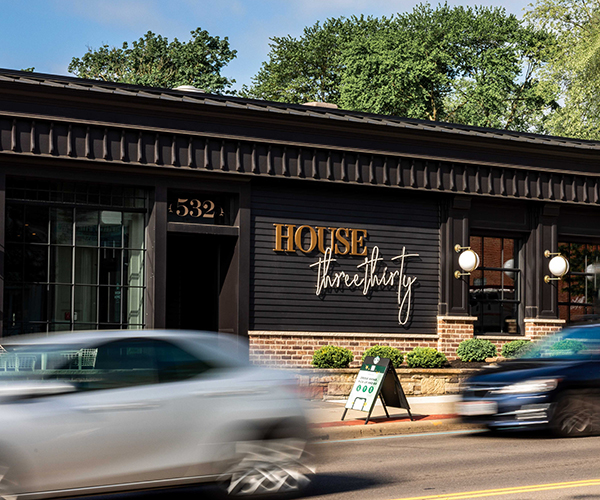The Stats on Six $866,922 Estimated cost of sending six kids to a public state college for four years in 2022
1993 Year the first set of living sextuplets was born in the United States
1 The number of septuplet sets living in the United States today
1,080 Average number of bottles given to sextuplets in one month
2 Gallons of formula needed to feed six babies a day
$1,197 Cost of supplying six babies with one month of formula
1,080 Average number of diapers parents of sextuplets change a month
$334 Average cost of diapering six babies for one month in Huggies
$1,950 Cost of six moderately priced cribs, crib mattresses and crib sheets
$1 million Estimated cost to an insurance company of a sextuplet birth
400 percent The climb in multiple births between 1980 and 1998
300 Additional daily calories needed by a woman pregnant with one baby
900 Additional daily calories needed by a woman pregnant with six babies
28 Pounds gained by Hanselman while pregnant
1 minute Time Jennifer Hanselman delivered her babies Caesarean section
10 Number of doctors present for the Hanselman delivery
34 Total staff present for the Hanselman delivery
Sources: The U.S. Centers for Disease Control and Prevention, Dr. Sherman J. Silber, Akron General Medical Center, FinAid.org Jennifer's Pregnancy Cravings: Fluids. "Because of the medication I was given, I was on a fluid-restricted diet," she explains. "I could only take three to four ounces per hour, so I was always thirsty." Weeks of bed rest: About five How she kept busy:A lot of reading and cross-stitching How she slept: Not well. "I had all these cords around me. With my big belly, turning over was a 10-minute ordeal." Did she talk to the babies? A lot. "I would talk to them every time they would start kicking each other and cause a big ruckus." Morning sickness: None How friends/family reacted:"They were as shocked as we were." |
It was all a waiting game. And the longer the wait, the better.
In the end, the Hanselman sextuplets were born at 28 1/2 weeks, giving them a 90 percent chance of survival. As this issue went to press, Isabella Jean, Sophia Ivy, Kyle Allen, Logan James, Alex Edwin and Lucy Arlene were all doing well, though still listed in critical condition at Children's Hospital in Akron. They are the first set of sextuplets ever born in Ohio.
"We were surprised to hear that," says their mother, Jennifer. "It's kind of cool."
The Hanselman sextuplets now join an elite company. There are only seven other sets alive in the United States. And, from amassing diapers to fitting their little ones in a car, Jennifer and dad Keith are in for an equally unique set of challenges.
Read on for advice from a family that's been there, a look at the rise in multiple births and the large numbers that six so small can generate.
The Rise in Multiples
A mere two hours after Keith Hanselman's sextuplets were born, the media surrounded him at a press conference, where he likened the experience to "winning the lottery and the Indy 500 all in one day."
Anyone could understand his excitement. His wife, Jennifer, managed to carry the babies for about seven months. After a quick Caesarean section, both mother and babies were doing well.
Later, when images of the tiny Hanselmans appeared in newspapers and on television screens across the country, many people looked past the babies' low birth weights, breathing tubes and jaundiced skin and cheered.
Dr. Sherman J. Silber probably wasn't one of them.
The world-renowned infertility specialist hates reading news stories that celebrate five-, six- or seven-baby births.
"It is an absolute medical disaster," says Silber, who is based in St. Louis. While he says he always hopes and prays such babies are healthy, the odds are against them.
High-order births, says Silber, are completely avoidable and make us look like "cowboys" to the rest of the world, where the approach to infertility is much more conservative. Most women who become pregnant with three or more fetuses have been treated with fertility drugs, which cost about $1,500 to $2,000 per cycle. At about $8,000 to $10,000 a cycle, in vitro fertilization is more expensive, but it allows doctors to eliminate the possibility of triplets or more by only implanting one or two embryos.
"It gives you a tremendous medical advantage," Silber says. Until insurance companies start covering the procedure, however, he acknowledges that it will continue to be used as a treatment of last resort for most infertile couples.
But even if fertility drugs are used, Silber says more can be done to prevent multiples. Doctors who closely monitor their patients can see how many follicles are ripening. If there are more than two or three, the treatment cycle can be halted. If the patient is not willing to cancel the treatment because of either lost time or money, Silber says it's the doctor's responsibility to discuss selective reduction before moving forward.
In the beginning, the Hanselmans' fertility specialist told them that keeping all six babies was risky. But the couple decided that selective reduction wasn't for them.
"If God wanted us to have six babies, we didn't want to second-guess that," says Jennifer.
For the first time in four decades, the U.S. government announced that infant mortality rates have increased, partially because of high-order births. Unless we change our approach to treating infertility, Silber says we can expect more stories about quintuplets, sextuplets and even septuplets. But he warns that we should remember that for every happy photo we see in glossy magazines like this one, there is a tragic story of loss. "And it'll just get worse and worse," Silber adds.
The Hanselmans are among the lucky ones, and they know it.
"Nobody criticized our decision, but it was stressful at first. My mother thought I was going to die, so she cried for weeks," says Jennifer. "We hoped for the best and tried to be realistic."
Sextuplet Suggestions
Don't call them the Dilley Children. They are Adrian, Brenna, Claire, Ian, Julian and Quinn.
Now 10, the kids from Indiana are the first known sextuplets to survive birth. And the No. 1 piece of advice their mother has for the Hanselmans is to treat their children as individuals. "Society likes to group them together," Becki Dilley says. "We try to do a 180 from that."
The kids were never dressed alike and were encouraged to pursue their own interests, even if it meant running in different directions so that some could go to soccer practice while others headed to music or dance lessons.
As for the early months, Becki lined up help for her husband, Keith, who stayed home with the kids while she went back to work. But he found it easier to handle the newborns himself. "He really felt that help was more of an intrusion," Becki explains. "It was a lot of women sitting around talking. He sent the help away."
Though the Dilleys did have to stock up on cribs, car seats and other baby gear, they never felt the need to supersize their house. In 1,500 square feet of space, they have three bedrooms and two baths. "Everybody likes to be together," Becki says. "And it's just easier to keep clean."
The six children recently signed on with Campbell's as Campbell Kids, but have turned away other endorsement opportunities that required them to dress alike or downplayed their individuality. While the money does help, Becki stresses that it's more in the league of financing braces (four pairs are needed) than college (they're all honor-roll students and have been encouraged to seek scholarships).
In the end, she says, there is no recipe for raising multiples. Instead, she advises the Hanselmans to find out what works for them. "They know what's best for their children," Becki says.
And, in case they ever need to talk to someone who's been there, Becki asked that we pass her phone number on to the Hanselmans. "If they're calling from the hospital," she adds, "they can even reverse the charges."
Marina Takahashi provided additional reporting on this story.



